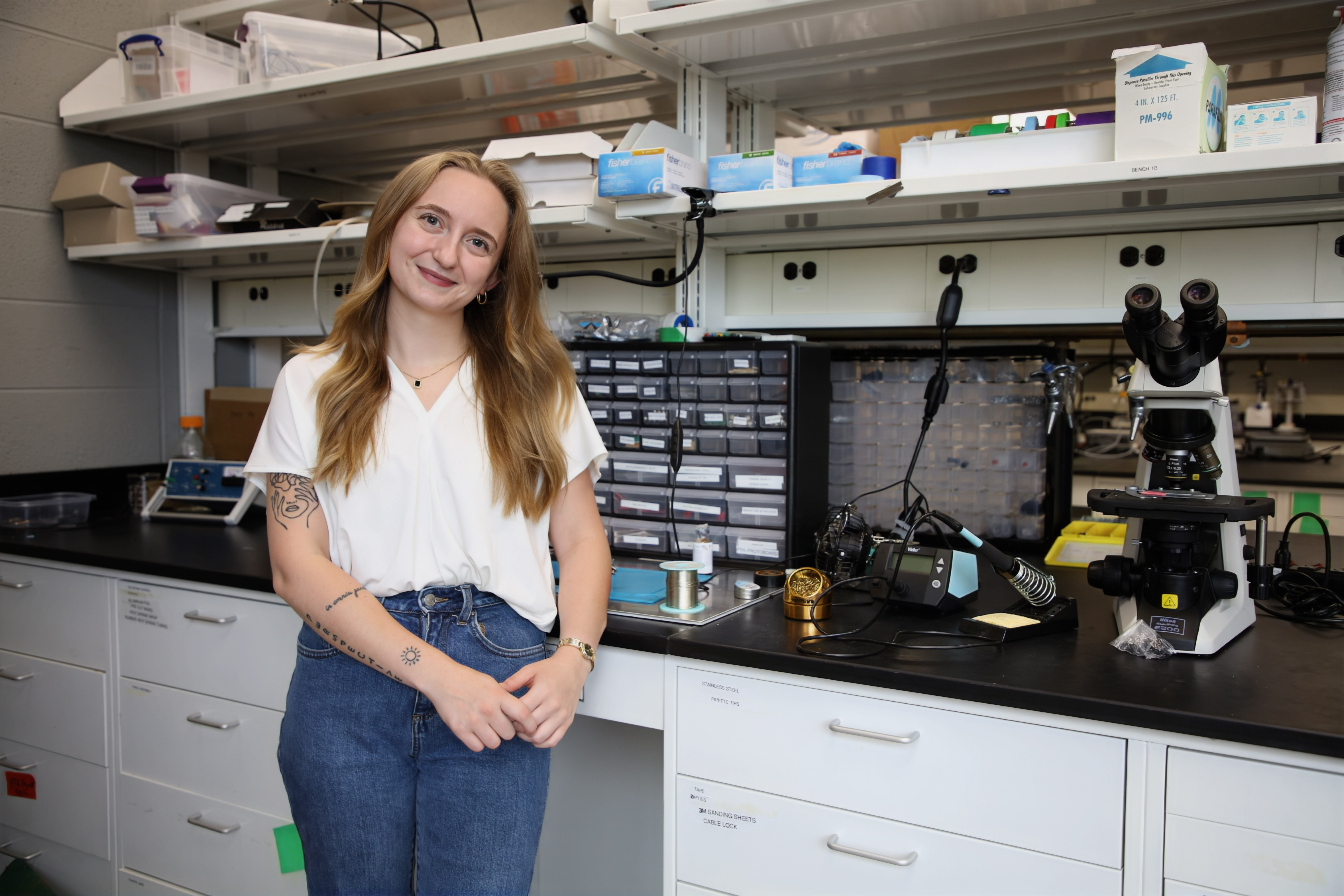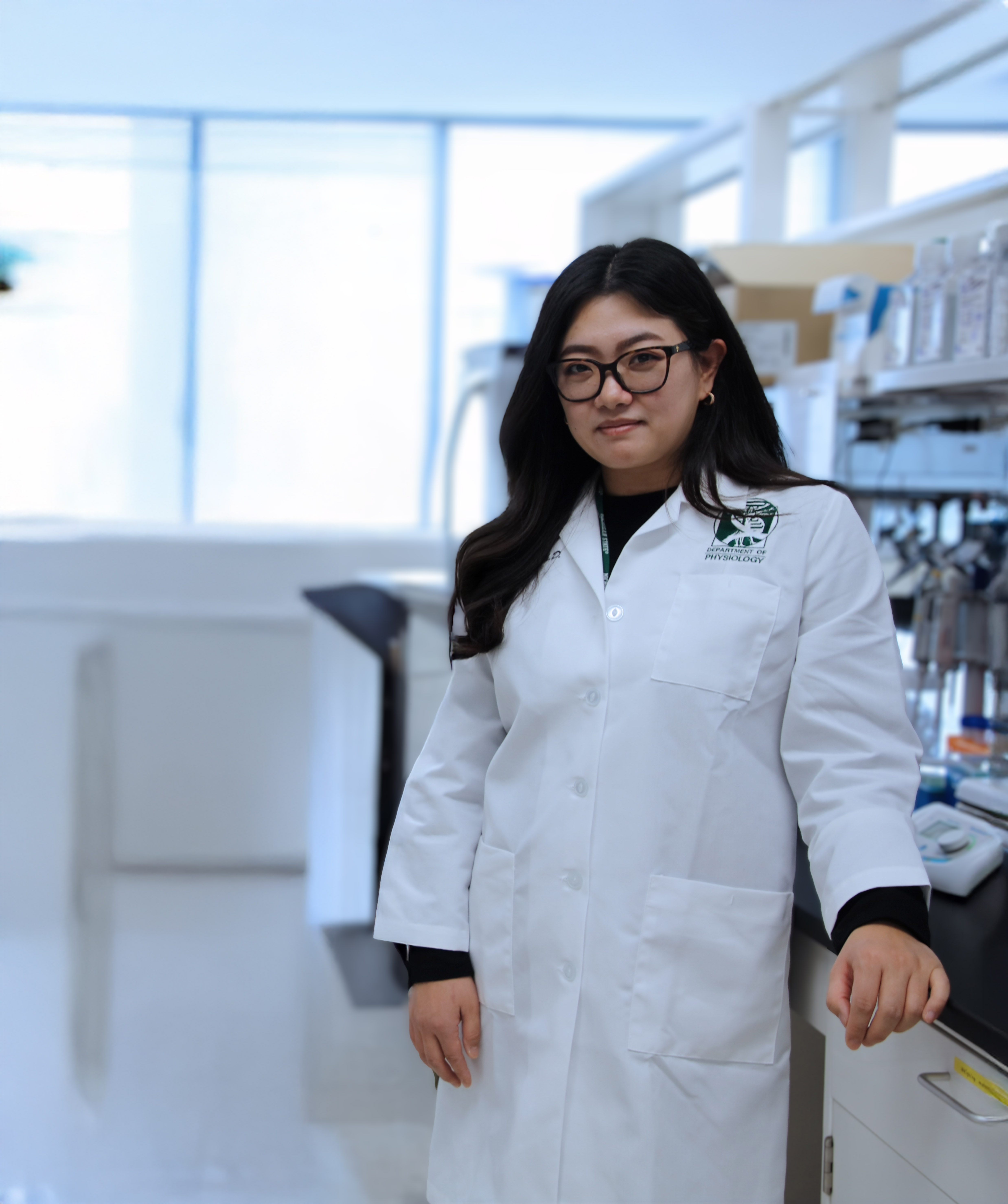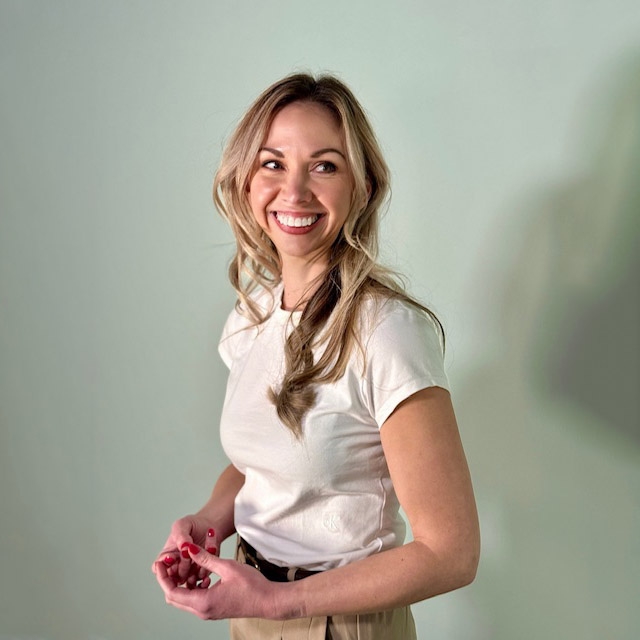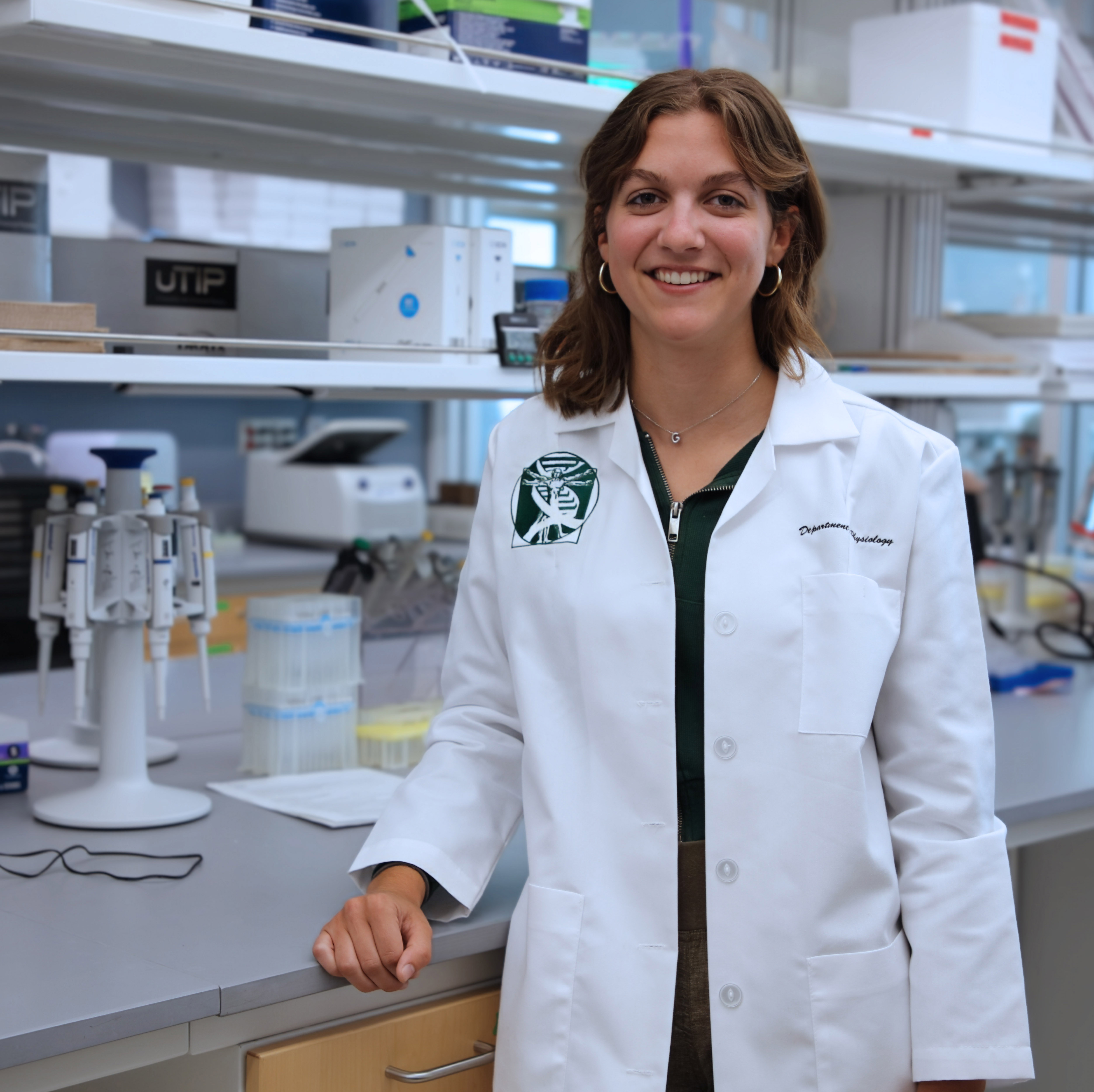Student Spotlight: Joslyn Claypool
Dual fellowships support Claypool's deep dive into neuroscience and brain inflammation
Article Highlights
-
Claypool earned two fellowships to pursue full-time neuroscience research at MSU this summer.
-
Her work explores how adenosine and caffeine impact brain blood flow and inflammation, with potential relevance to neurological diseases.
-
A first-generation college student, Claypool’s academic path has been shaped by curiosity, resilience, and strong family support.

This summer, Michigan State University senior Joslyn Claypool will spend her days researching in Dr. Qingguang Zhang’s lab, thanks to two awards she recently won: the 2025 Summer Undergraduate Research Fellowship from the American Physiological Society and a research support fellowship from MSU’s College of Natural Science.
Claypool, a double major in neuroscience and psychology, is investigating how adenosine, a chemical affected by caffeine, influences brain blood flow and inflammation. Her research could have important implications for neurological conditions like traumatic brain injury and multiple sclerosis. The fellowships allow her to focus full time on her research this summer and will culminate in an invitation to present her work at the APS annual conference next year.
We caught up with Claypool to talk about the fellowships, her research, and the personal path that brought her to this point.
Q: Congratulations on being awarded the American Physiological Society’s 2025 Summer
Undergraduate Research Fellowship (SURF). How does this fellowship contribute to your
academic and professional development?
A: The APS summer undergraduate research fellowship is a great opportunity for me
to focus on my research project full-time throughout the summer. On top of the skills
that I learn in the lab, I also have weekly meetings with the 11 other fellows where
we work on building other important skills, such as explaining our research, preparing
for conferences, and we get to hear from guest speakers, who consist of other scientists
studying physiology. This award also includes an invitation to present my work at
the APS annual conference next April, where I will get the opportunity to share my
work and get to learn about other work being done in the field of physiology.
Q: Could you explain the main objectives of your SURF project and then also your CNS
research support fellowship?
A: My CNS research project started as an investigation into how caffeine, which is
an adenosine antagonist, impacts the cerebral vasculature in awake, behaving mice.
My SURF project is an expansion of that, where I will be uncovering more about how
adenosine is impacting brain hemodynamics and the blood brain barrier in both physiological
and pathological conditions, such as systemic inflammation.
Q: Can you explain how you will be combining these two projects or how they are related
to each other?
A: Caffeine is a non-selective adenosine antagonist, and because of this, it has long
been suspected of being a vasoconstrictor, which I validated in the experiments done
for my CNS project. During the experiments, we also saw an increase in neuronal activity
and an increase in blood flow and oxygen diffusion into the brain tissue. These results
made me question more about how adenosine and its other antagonists can influence
other parts of the neurovascular unit under various conditions. My SURF project is
going to be delving deeper into that question as I examine extracellular adenosine
levels and the cerebral vasculature changes under systemic inflammation, as adenosine
is suspected of playing both pro and anti-inflammatory roles throughout the body.
Q: What inspired you to investigate the effects of caffeine on brain function?
A: Caffeine is the most widely used stimulant in the world. There has long been debate
about whether it is more helpful or harmful for us. As an avid caffeine consumer myself,
I was also curious about this. Blood flow is how both our brain tissue gets nutrients
and removes waste. Thus, it is extremely important for us to understand how different
things we consume under various circumstances can impact that very important function.
Q: What potential significance does your research hold for understanding or treating
neurological conditions?
A: Understanding the role that adenosine plays in brain hemodynamics can be vital
for many neurological conditions and overall brain health. It is especially important
when looking at disorders that have been connected to brain inflammation, such as
traumatic brain injury, multiple sclerosis, and many other neurological diseases.
When we are better able to determine the exact relationship between adenosine, inflammatory
effects, and brain blood flow to those regions, we are better able to determine targets
for future treatment.
Q: You’re pursuing a dual degree in neuroscience and psychology. How has this interdisciplinary
approach influenced your research and studies?
A: My passion for the brain started a curiosity about why people behave and act differently
from others. The beginning of this journey was to learn about the field of psychology,
which has given me great insight into how the environment and experiences can impact
the way people behave in the world. I then became interested in what actual physiological
processes in the brain influence these same behaviors, which is why I then added on
a second degree in neuroscience. As I am sure many epigeneticists will agree, the
answer to a lot of these questions lies in both social and biological science. While
most of my current work is targeting the biological side of problems, I do hope in
the future to expand more on the social side as well. While I am not currently doing
a study connected to psychology, I do think my background in it does offer me a unique
perspective when approaching scientific questions.
Q: You plan to graduate spring of 2026 and want to join a neuroscience graduate program.
What are your top two schools of choice and why those schools?
A: The Francis Crick Institute in London is my top choice. The institute strongly
encourages interdisciplinary work as well as collaborations between research groups.
They are producing great research and would allow me to study in a city I love. My
second choice would be UC San Francisco, as they are leading the field in multiple
areas of neuroscience research. They have multiple labs doing research that I would
love to work in. I would love the opportunity to study and research in either of these
amazing programs, but overall, I mainly just care about becoming a stronger scientist
wherever I end up!
Q: Outside of your academic work, what hobbies or interests do you enjoy?
A: I am an avid reader. I am currently rereading Emma by Jane Austen, and then I am planning on tackling either East of Eden by John Steinbeck or The Brothers Karamazov by Fyodor Dostoevsky. Other than that, I am usually hanging out with my cat, Oliver.
Q: How do you balance your demanding academic and research schedule with personal
time?
A: This has been something I have struggled with in the past because throughout the
last two years, I have also been working every weekend at Community Mental Health
in the child crisis unit. While I did love my job at CMH, I am lucky to now move on
to be in the lab full time with the help of my fellowship and scholarships. Now that
I have my weekends free again, I really try to enjoy them the best I can. I love going
to the farmers market in Okemos on Saturdays and taking the time to slow down and
cook good meals throughout the week. It’s also important to take breaks during the
workday too so you will often see me and my fellow lab member Olivia going for a walk
around campus.
Q: Who or what has been your biggest inspiration throughout your academic journey?
A: Ever since I was little, my mom and I have rewatched the show Gilmore Girls at least once a year. Being a first-generation student and daughter to a single mom,
it is a show that has truly kept me going when I lose motivation. The main character,
Rory, is a smart bookworm with big career ambitions, and is who I always watch when
I need to remember to keep trying for what I want. With that, I am also inspired by
my mom, who has worked hard my whole life and has always encouraged me to keep asking
questions about the things that I am curious about, which is how I became a scientist.
Background
Q: Where were you born and raised?
A: I was born and raised in Muskegon, Michigan, and attended Reeths-Puffer High School.
Q: What made you decide to come to MSU?
A: When I first graduated from high school, I could not afford university, so I attended
Grand Rapids Community College and then Lansing Community College. But even through
that, I knew I was going to end up at MSU. I grew up with a family of Michigan fans,
but I have always had a love for MSU, and the first time I came to East Lansing, I
knew there was no other place I could imagine going. Between the beautiful campus
and the amazing community, I knew this was where I wanted to be.
Q: How did you end up in Dr. Zhang’s lab?
A: Last summer, while I was looking into the many amazing research labs that MSU has,
I interviewed with a few but ultimately knew I wanted to be in the Zhang lab. When
I first met with Dr. Zhang and got to see the amazing imaging techniques and technology
being used to do in vivo research, I was hooked.



